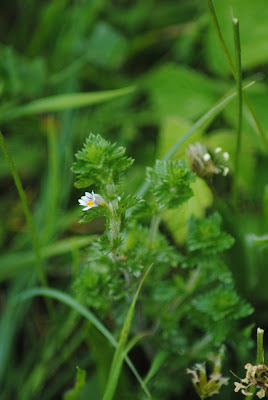This blog may help people explore some of the 'hidden' issues involved in certain media treatments of environmental and scientific issues. Using personal digital images, it's also intended to emphasise seasonal (and other) changes in natural history of the Swansea (South Wales) area. The material should help participants in field-based modules and people generally interested in the natural world. The views are wholly those of the author.
Monday, 26 June 2023
Seeing the Changes 1833
At Crymlyn Burrows noted Eyebright (Euphrasia officinallis); Hogweed (Heracieum sphondylium); Bladder campion (Silene vulgaris); Marsh woundwort (Stachys palustris) and Bristly ox-tongue (Picris echinoides) in bloom. Also spotted a first Six-spot Burnet moth (Zygaena filipendulae) pupa; a possible Pyrausta despictata moth; a Small copper (Lycaena phlaeas) and more Dark Green fritillary (Mesoacidalia aglaja) pics showing possible sexual dimorphism, frisky behaviour and feeding frenzy.
Subscribe to:
Post Comments (Atom)
-
I n the UK and US, a pparently popular and successful vegan/vegetarian restaurants are reportedly closing or adding meat to their menus ( ...
-
Early ripening fruit may seem convenient but some folk think it confirms environmental stress. There's also a possibility th...













%20mating%20NWCW.jpg)


No comments:
Post a Comment